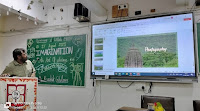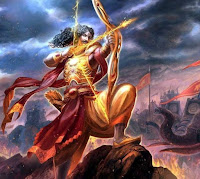Hello everyone,in this blog i will discuss about summary of 2 major article related to postcolonial Study
Globalization and the Future of Postcolonial Studies article by Ania Loomba 2ed edition of colonialism and postcolonialism
This research article, titled "Globalization and the Future of Postcolonial Studies," explores the intricate relationship between globalization and postcolonial studies. It delves into various aspects of this relationship, including the impact of the 9/11 phenomenon, the emergence of the New American Empire, the Global War on Terror, and the perspectives of scholars like Thomas Friedman, Hardt and Negri, Joseph E. Stiglitz, and P. Sainath. Additionally, it examines Klaus Schwab's concept of Globalization 4.0 and its connection to the Fourth Industrial Revolution while considering counterarguments presented by Noam Chomsky in his work, "Globalization and Its Discontents."
In the 21st century, globalization has had a profound impact on the world, shaping international relations, economics, and culture. However, this process is complex and multifaceted, presenting both opportunities and challenges. The article begins by highlighting the significance of the 9/11 attacks in reshaping global politics and giving rise to the New American Empire and the Global War on Terror. It emphasizes the need to consider questions of domination and resistance, which have been central to postcolonial studies, in this new global context.
The article suggests that the traditional boundaries of postcolonial studies have become porous in this era of heightened geopolitical tensions and evolving power dynamics. The violence and dominance inherent in these developments are intertwined with globalization, challenging the conventional notions of margins and centers in postcolonial studies. It calls for a more nuanced and dynamic approach to understanding these complex intersections of power, resistance, and identity.
The concept of the "Flat World" introduced by Thomas Friedman is examined, highlighting the transformative power of technology and connectivity in reshaping global relationships. However, critics argue that Friedman's perspective is distinctly American and lacks a broader global viewpoint. Nobel laureate Joseph E. Stiglitz criticizes the notion of a "flat world" and emphasizes that the world remains far from flat, with globalization sometimes exacerbating inequalities and disparities.
Furthermore, the article delves into the critique of globalization from scholars like P. Sainath, who highlight the destructive impact of Market Fundamentalism. This ideology, driven by the belief in the market as the solution to all problems, has global reach and contributes to various forms of fundamentalism. The article underscores the need to consider the broader societal implications of globalization and Market Fundamentalism.
Klaus Schwab's concept of Globalization 4.0 is introduced, drawing parallels between industrial revolutions and globalization waves. This era, known as the Fourth Industrial Revolution, is characterized by rapid technological advancements that challenge existing mindsets and require a new approach to the global economy.
The Future of Postcolonial Studies article by Ania Loomba
In summary, this research article explores the intricate relationship between globalization and postcolonial studies in the context of the 9/11 phenomenon, the New American Empire, the Global War on Terror, and the perspectives of various scholars and critics. It calls for a reevaluation of prevailing economic paradigms and emphasizes the need for responsible governance to ensure equitable distribution of globalization's benefits and mitigation of its pitfalls. The article highlights the evolving landscape of postcolonial studies and its relevance in addressing contemporary global challenges.
The conclusion of the book you quoted from discusses the challenges that postcolonial studies faces in engaging with new challenges, such as those posed by environmental studies.
One challenge is the need to address the environmental impact of colonialism and imperialism. The author argues that postcolonial studies should expand its scope to include the scholarship produced in the Anglo-American academy, as well as the work of scholars from the Global South.
Another challenge is the need to engage with the history and legacies of settler colonialism. The author argues that postcolonial studies has not engaged sufficiently with this topic, and that this is a result of both the discipline's over-reliance on models of colonialism in South Asia and Africa, and its estrangement from other allied traditions such as Native American studies and African-American studies.
The author also discusses the challenges of building solidarity between different groups of disenfranchised people. They point out that while there are pressing political overlaps between these groups, there are also important differentials between them. For example, Native Americans and African-Americans are citizens of the most powerful nation-state in the world, while many immigrants from the Global South are not.
The author concludes by discussing the importance of mass movements in the struggle against environmental destruction and displacement. They argue that while international political factors are important, they cannot supplant the role of mass movements on the ground.
The author also discusses the example of the Narmada Bachao Andolan (NBA), a mass movement in India that fought against the construction of a series of large dams on the Narmada River. The NBA's resistance was successful in halting the construction of some of the dams, and it also helped to raise awareness of the environmental and social costs of large-scale development projects.
The author argues that the NBA's success is a reminder of the importance of mass movements in the struggle for justice and sustainability



























